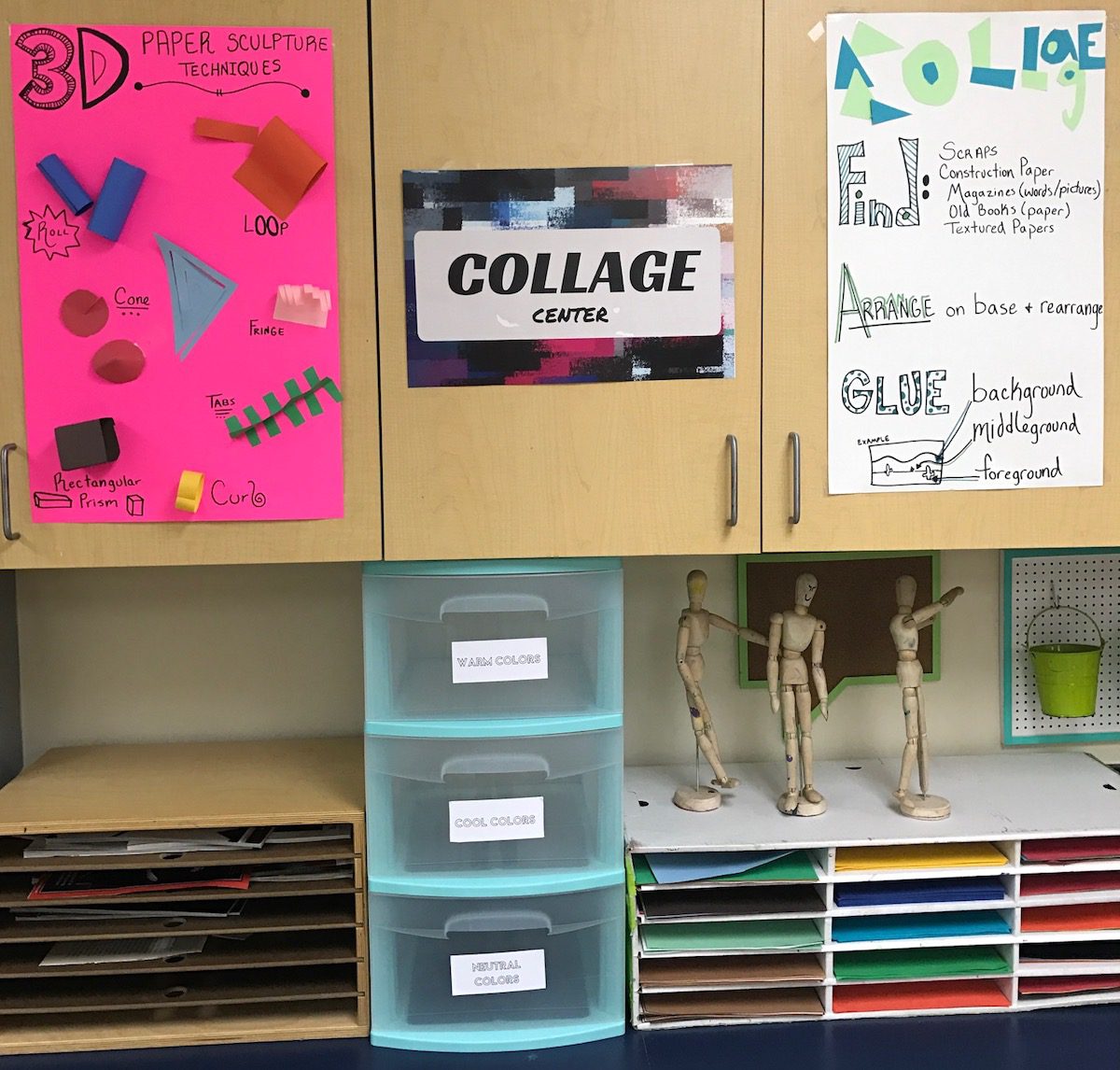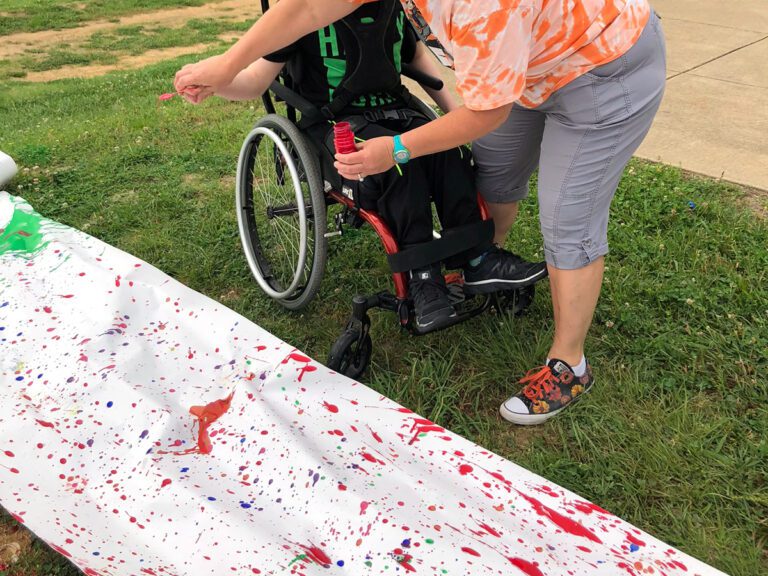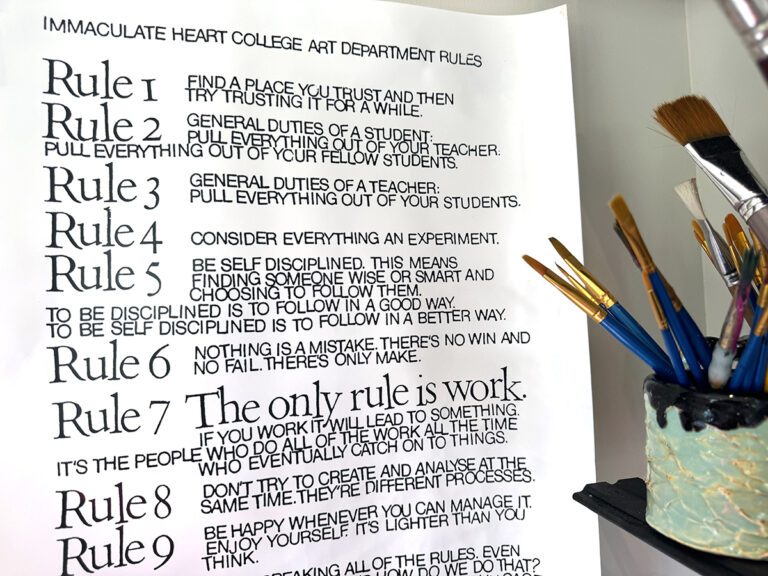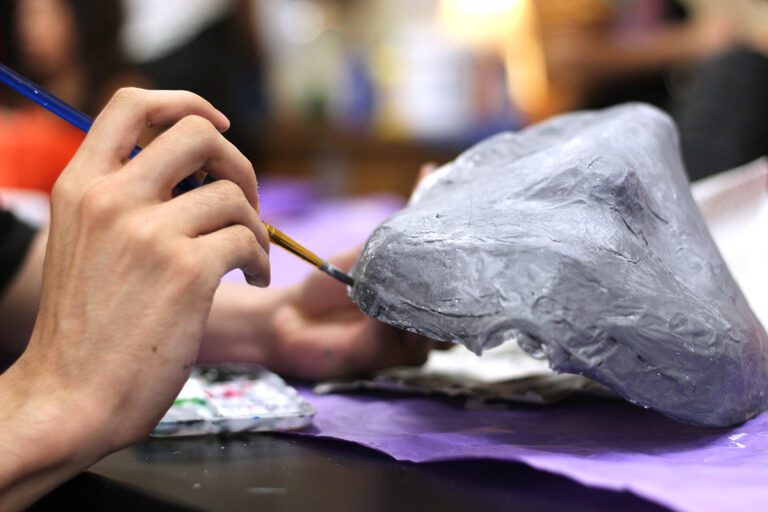We all know a good classroom management plan is a vital part of running a successful art room. And, there are many wonderful systems out there from which to choose. The trick is finding something that works with your distinct teaching philosophy, teaching style, and student body.
When it comes to choice-based art education, there are some unique challenges to overcome. After all, a big part of running a choice-based classroom is building an environment where your students can be independent. It’s important for teachers transitioning to or for students coming into a choice environment that the expectations and procedures be very clear.
Check out these 8 classroom management tips no choice-based art teacher can be without.
1. Trust your students.
The first few days of giving choice put me outside of my comfort zone. It was scary! But, I had to learn to let go because a choice-based environment is built on trust. It is a space where students can learn from one another. A huge benefit of giving your students choices is they naturally become more engaged in their learning. Over time, I learned my students are highly capable of getting their own supplies and using their own ideas.
Giving your students big ideas as you let them explore new media and techniques helps build their creative confidence. I also like to let my students pursue their own interests with the work they do in the classroom. Many times, they create things I would not have taught. Trusting your students to implement what they learn during mini-lessons and demonstrations is important!
2. Organize your supplies.
Organization in the choice-based classroom helps promote success. It’s why we devote an entire week to the topic in the Choice-Based Art Education course. An organized space helps students become independent because they can easily find what they need. Supplies are often set out in easy-to-reach places on counters and in cabinets, and everything is labeled. Using these two tips will help you avoid many headaches.
Once you set up your organizational system, allow your students time to practice with it. Run through getting supplies and cleaning them up. In this way, your students will learn how to effectively maintain order.
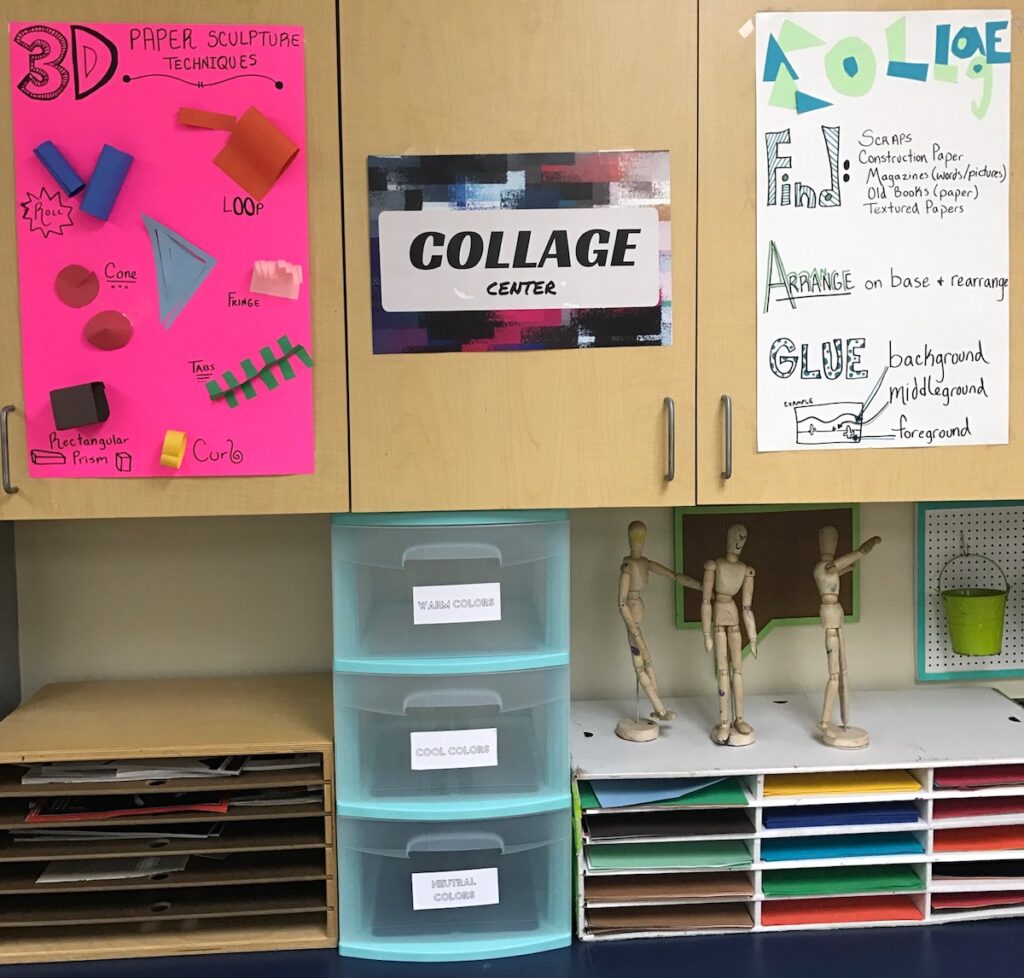
3. Have systems in place to choose centers.
When you begin to let your student choose their own materials, it is important to have a consistent way for students to choose centers. Depending on your class size, you may have all students begin after your mini-lesson or demonstration or have certain tables choose first.
In my room, I have a chart on my board indicating which centers are open. Once I am finished talking at the beginning of class, students can go to the chart to choose where they’d like to work. I know other teachers who have choice boards with clothespins that name different art centers. And, if you’re interested, Johanna Russel walks through an effective system she uses in her classroom in the PRO Learning Pack Differentiation in the Art Room.
Whatever system you choose, your students will get used to the routine as time goes by and easily transition through the room to their centers.
4. Don’t worry about rewards systems.
I no longer have a reward and consequences chart in my art room. One reason is I don’t think it flows well with the philosophy that students and teachers are on a level playing field as learners. The other reason is I find my students are internally motivated in a choice-based setting, and I really don’t need one.
I also think these types of systems take away from the true reason behind the class. If students are only working toward a reward, it seems to water down the idea of creating art for enjoyment and learning.
I understand a positive note here and there and giving positive verbal feedback but no need for the charts with each class. In my experience, my students are highly engaged when they are able to have choices, and that is a reward in itself.
5. Make classroom expectations together.
The classroom culture is such an important aspect of classroom management. Promoting an environment that encourages mutual respect is priceless. If you have positive relationships with your students, managing is less important because you all are working together to have a great classroom environment.
Students work harder when they know you care. One way I promote this idea is by creating the classroom expectations with my students. It helps my students see I value their opinions and am genuine about creating a student-centered atmosphere.
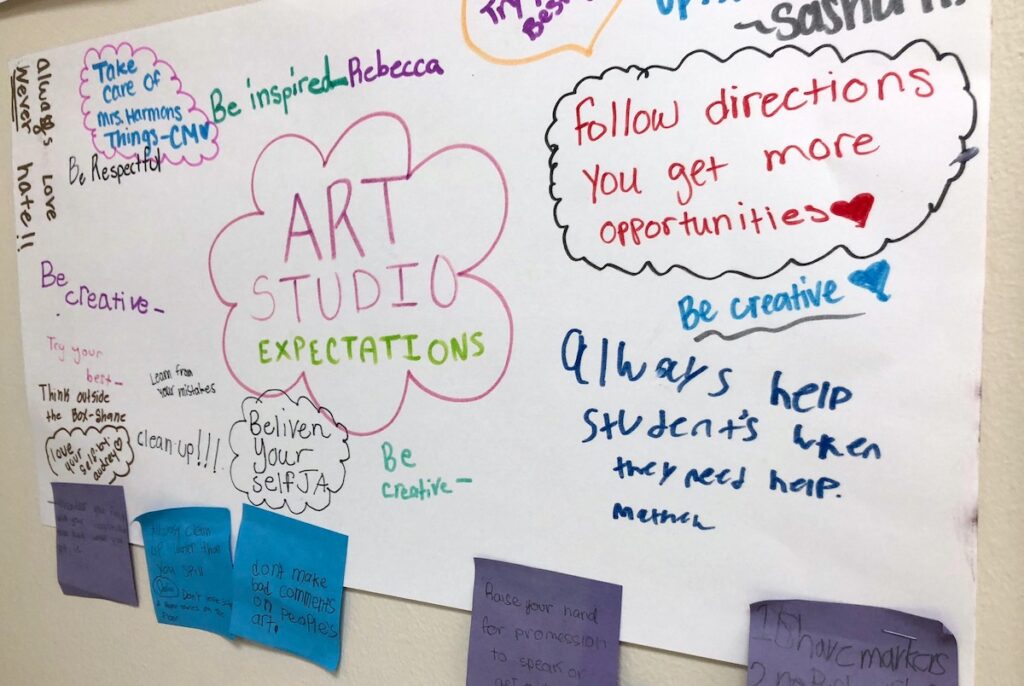
6. Open centers slowly.
Depending on your level of choice, your students will probably be getting their own supplies. It is key to take time and gauge your students when opening centers. Some classes may differ from others and that is okay. We all know each class is unique and while some are ready to learn about new materials and techniques, a few classes may need some extra time.
I start the year by opening the drawing center for two weeks and allow my students to explore techniques they learned through classroom demonstrations. These could be connected to a theme, or you can leave it open-ended. As students explore, they learn but also gain skills in how to maintain the centers.
7. Practice cleanup procedures.
Cleanup is a big component of classroom management in a choice-based setting. You must share clear cleanup procedures with your students, practice cleanup routines, and emphasize teamwork. If you can minimize the supplies in use by letting students share materials instead of getting individual supplies, that can help with cleanup time, too.
If your students are not consistent with cleanup, don’t take away stations. Practice the routines and, if needed, add more time to your students’ cleanup routine. Taking away stations will only create resistance. In my classroom, once they realized more time was designated to their cleanup and coming out of their work time, they were more apt to work harder with the cleanup routines and procedures.
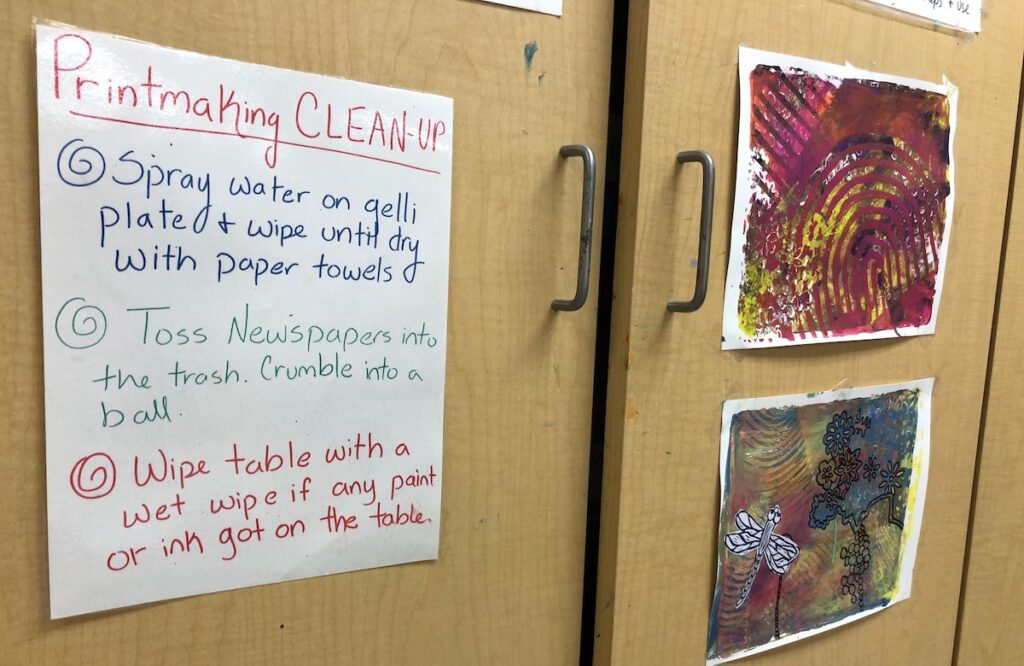
8. Give words of affirmation.
Positive reinforcement goes a long way. While you work to build relationships with all your students, remember to find something positive to say. You will not only improve your relationship but help build your students confidence as well. When you see students putting up supplies correctly, make sure to point it out and make a big deal about it. This works with cleaning up on time, too!
As a teacher with a choice-based classroom, I have a new found appreciation for organization, labeling, and trusting my students. While I was organized in my traditional-style classroom, giving my students choice definitely made me step up my game when it came to many of these tips. As you work to provide your students with more choices in the classroom, I hope you find these tips helpful.
What is your most effective classroom management advice?
What choices do you give your students?
Magazine articles and podcasts are opinions of professional education contributors and do not necessarily represent the position of the Art of Education University (AOEU) or its academic offerings. Contributors use terms in the way they are most often talked about in the scope of their educational experiences.
